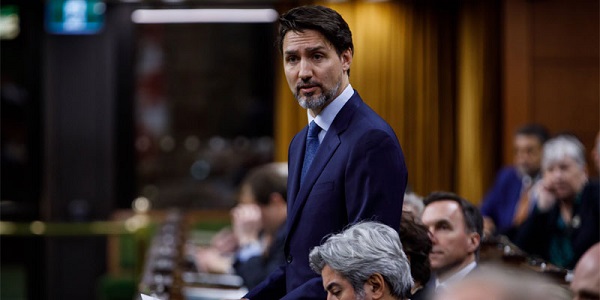David Clinton
The Hidden and Tragic Costs of Housing and Immigration Policies

We’ve discussed the housing crisis before. That would include the destabilizing combination of housing availability – in particular a weak supply of new construction – and the immigration-driven population growth.
Parsing all the data can be fun, but we shouldn’t forget the human costs of the crisis. There’s the significant financial strain caused by rising ownership and rental costs, the stress so many experience when desperately searching for somewhere decent to live, and the pressure on businesses struggling to pay workers enough to survive in madly expensive cities.
If Canada doesn’t have the resources to house Canadians, should there be fewer of us?
Well we’ve also discussed the real problems caused by low fertility rates. As they’ve already discovered in low-immigration countries like Japan and South Korea, there’s the issue of who will care for the growing numbers of childless elderly. And who – as working-age populations sharply decline – will sign up for the jobs that are necessary to keep things running.
How much are the insights you discover in The Audit worth to you?
Consider becoming a paid subscriber.
The odds are that we’re only a decade or so behind Japan. Remember how a population’s replacement-level fertility rate is around 2.1 percent? Here’s how Canadian “fertility rates per female” have dropped since 1991:
Put differently, Canada’s crude birth rate per 1,000 population dropped from 14.4 in 1991, to 8.8 in 2023.
As a nation, we face very difficult constraints.
But there’s another cost to our problems that’s both powerful and personal, and it exists at a place that overlaps both crises. A recent analysis by the Parliamentary Budget Officer (PBO) frames it in terms of suppressed household formation.
Household formation happens when two more more people choose to share a home. As I’ve written previously, there are enormous economic benefits to such arrangements, and the more permanent and stable the better. There’s also plenty of evidence that children raised within stable families have statistically improved economic, educational, and social outcomes.
But if households can’t form, there won’t be a lot of children.
In fact, the PBO projects that population and housing availability numbers point to the suppression of nearly a half a million households in 2030. And that’s incorporating the government’s optimistic assumptions about their new Immigration Levels Plan (ILP) to reduce targets for both permanent and temporary residents. It also assumes that all 2.8 million non-permanent residents will leave the country when their visas expire. Things will be much worse if either of those assumptions doesn’t work out according to plan.
Think about a half a million suppressed households. That number represents the dreams and life’s goals of at least a million people. Hundreds of thousands of 30-somethings still living in their parents basements. Hundreds of thousands of stable, successful, and socially integrated families that will never exist.
And all that will be largely (although not exclusively) the result of dumb-as-dirt political decisions.
Who says policy doesn’t matter?
How much are the insights you discover in The Audit worth to you?
Consider becoming a paid subscriber.
For the full experience, upgrade your subscription.
Business
Cannabis Legalization Is Starting to Look Like a Really Dumb Idea

Back in March 2024, I wrote about some early indications that Canada’s legalization of cannabis was, on balance, causing more harm than good. Well it looks like we’ve now moved past “early indications” and entered the “nervously searching for the exit” stage.
The new concerns follow the recent release of a couple of groundbreaking Canadian studies: Cannabis Use Disorder Emergency Department Visits and Hospitalizations and 5-Year Mortality which found evidence relating cannabis use to early death, and Convergence of Cannabis and Psychosis on the Dopamine System which describes a possible biological mechanism linking cannabis use to psychosis.
Canadian governments had very little moral liability for the medical consequences of cannabis use before they legalized it in 2018. However, legalization predictably led to a near doubling of consumption. In 2012, according to Statistics Canada, just 12.2 percent of Canadians 15 and over had used cannabis in the previous 12 months. By 2022, that number had climbed to 22 percent – representing nearly seven million Canadians. Cases of cannabis use disorder (CUD) treated in Ontario hospitals increased from just 456 in 2006 to 3,263 in 2021.
The government’s decision to legalize the drug¹ has arguably placed millions of additional people at risk of serious health outcomes.
Let’s take a look at the new evidence. The mortality study used hospital care and mortality data for more than eleven million Ontario residents. The researchers were given meaningful access to raw data from multiple government sources and were apparently compliant with all appropriate privacy regulations. They tracked 107,103 individuals who, between 2006 and 2021, were treated in an Ontario hospital for cannabis use disorder.
The main control group used for statistical comparison was all Ontarians. And the secondary control group was made up of individuals with incident hospital-based care for other substance use disorders, like alcohol, opioids, stimulants.
The primary outcome tracked by the study was all-cause mortality. The secondary outcome was mortality subdivided into alcohol poisoning, opioid poisoning, poisoning by other drugs, trauma, intentional self-harm, cancer, infection, diseases of the circulatory system, respiratory system, and gastrointestinal system.
The researchers adjusted for age, sex, neighborhood income quintile, immigrant status, and rurality (urban vs rural residence). They also controlled for comorbid mental health and care for substance use during the previous 3 years.
In other words, this looks like a well-constructed retrospective study based on excellent data resources.
What did they discover? People who received hospital-based care for cannabis use disorder were six times more likely to die early than the general population. And those CUD-related deaths lead to an average 1.8 life-years lost. After adjusting for demographic factors and other conditions, the added risk of early death was still three times greater than the general population. (Although people with CUD incidents were less likely to die young than those with other substance abuse disorders.)
CUD incidents were associated with increased risks for suicide (9.7 times higher), trauma (4.6 times higher), opioid poisoning (5.3 times higher), and cardiovascular and respiratory diseases (2 times higher).
The Convergence of Cannabis and Psychosis study was performed in and around London, Ontario. This one is a bit beyond my technical range, but they claim that:
Elevated dopamine function in a critical SN/VTA subregion may be associated with psychosis risk in people with CUD. Cannabis was associated with the hypothesized final common pathway for the clinical expression of psychotic symptoms.
Which does indicate that there may be more connecting cannabis to overall harm than just social or economic influences.
I’m not suggesting that the government should restore the original ban on cannabis. Like alcohol prohibition, the moment when that might have been possible is now long past. But I am wondering why politicians find it so difficult to wait for even minimal scientific evidence before driving the country over the cliff?
armed forces
How Much Dollar Value Does Our Military Deliver?

To my great surprise I recently noticed that, despite being deeply engaged in wars against at least four determined enemies, Israel doesn’t spend all that much more on their military than Canada does on its forces. What might that tell us about government efficiency?
There’s fairly universal agreement that Canada doesn’t spend enough on its military. But before we can even ask how much we should be spending, we should understand how much we’re already spending. And figuring that out isn’t nearly as easy as I’d expected.
According to the 2025–26 Expenditures by Purpose data released by the Treasury Board Secretariat, the Department of National Defence (DND) was allocated $35.7 billion (CAN). However, the New York Times recently reported that Primer Minister Carney’s $9.3 billion increase would bring the total defence-related spending to $62.7 billion – which suggests that, prior to the increase, we were set to spend $53.4 billion (CAN).
So I’ll work with both of those figures: $35.7 billion ($26 billion USD) and the pre-announcement $53.4 billion ($39 billion USD). By contrast, Israel currently spends around $37 billion (USD) on the Israel Defense Forces (IDF) which is in the neighborhood of 18 percent of their total budget.¹ The IDF is (literally) getting a much bigger bang for their buck.²
I’m going to compare the military inventories of both countries to get a sense of what a dollar of government spending can get you. I understand that this isn’t an apples-to-apples comparison and there are many complicating factors here. But I think the exercise could lead us to some useful insights. First off, here’s a very rough estimate of existing inventories:
I’m sure there are plenty of caveats we could apply to those numbers, including how much of that equipment is actually fit for service on any given day. But they’ll have to do.
In addition, there are currently 68,000 regular troops in the Canadian Armed Forces (CAF) along with 22,500 reserves, while the IDF employs 169,500 regular troops and 465,000 reserves. They also cost money.
Based on some very rough estimates,³ I’d assess the value of IDF assets at around 2.6 times the value of comparable CAF assets. That means that the IDF – using their procurement systems – would need to spend just $14.4 billion (USD) to purchase the equivalent of the current set of CAF assets.
Now compare that with our actual (pre-increase) expenditures of either $26 billion USD or $39 billion USD and it seems that we’re overspending by either 80 percent or 270 percent.
I think we’d be wise to wonder why that is.
For full context, Israel receives around $3.8 billion (USD) in military aid annually from the U.S.
Speaking of which, for simplicity, I completely left the ongoing costs of ordinance out of my calculations.
If you’re really interested, you can see my calculations here.
Subscribe to The Audit.
For the full experience, upgrade your subscription.
-

 Bruce Dowbiggin2 days ago
Bruce Dowbiggin2 days agoThe Covid 19 Disaster: When Do We Get The Apologies?
-

 Crime1 day ago
Crime1 day agoSweeping Boston Indictment Points to Vast Chinese Narco-Smuggling and Illegal Alien Labor Plot via Mexican Border
-

 Alberta1 day ago
Alberta1 day agoAlberta school boards required to meet new standards for school library materials with regard to sexual content
-

 Business15 hours ago
Business15 hours agoTrump slaps Brazil with tariffs over social media censorship
-

 Environment1 day ago
Environment1 day agoEPA releases report on chemtrails, climate manipulation
-

 International15 hours ago
International15 hours agoSupport for the Ukraine war continues because no one elected is actually in charge.
-

 Addictions17 hours ago
Addictions17 hours agoCan addiction be predicted—and prevented?
-

 Business18 hours ago
Business18 hours agoCBC six-figure salaries soar











